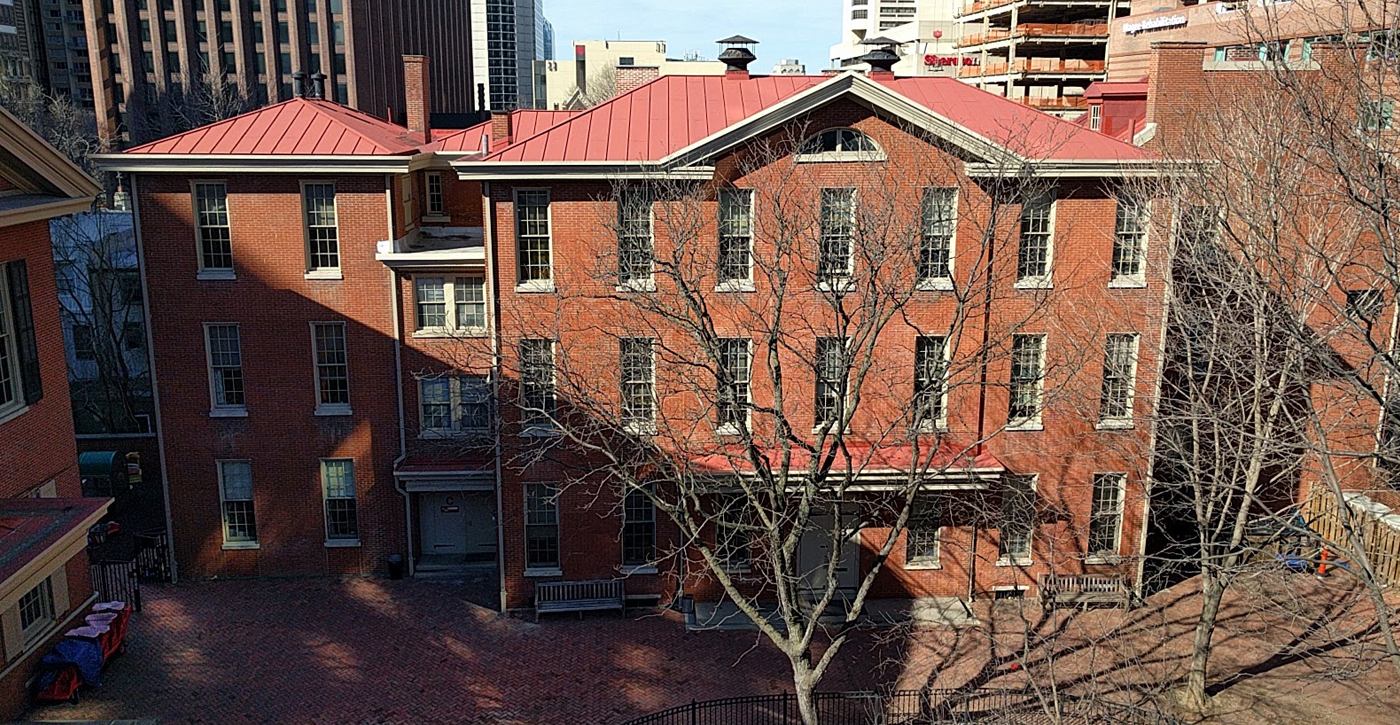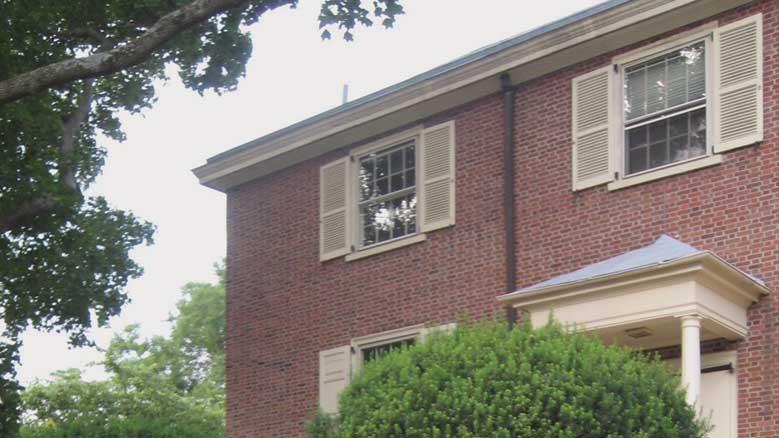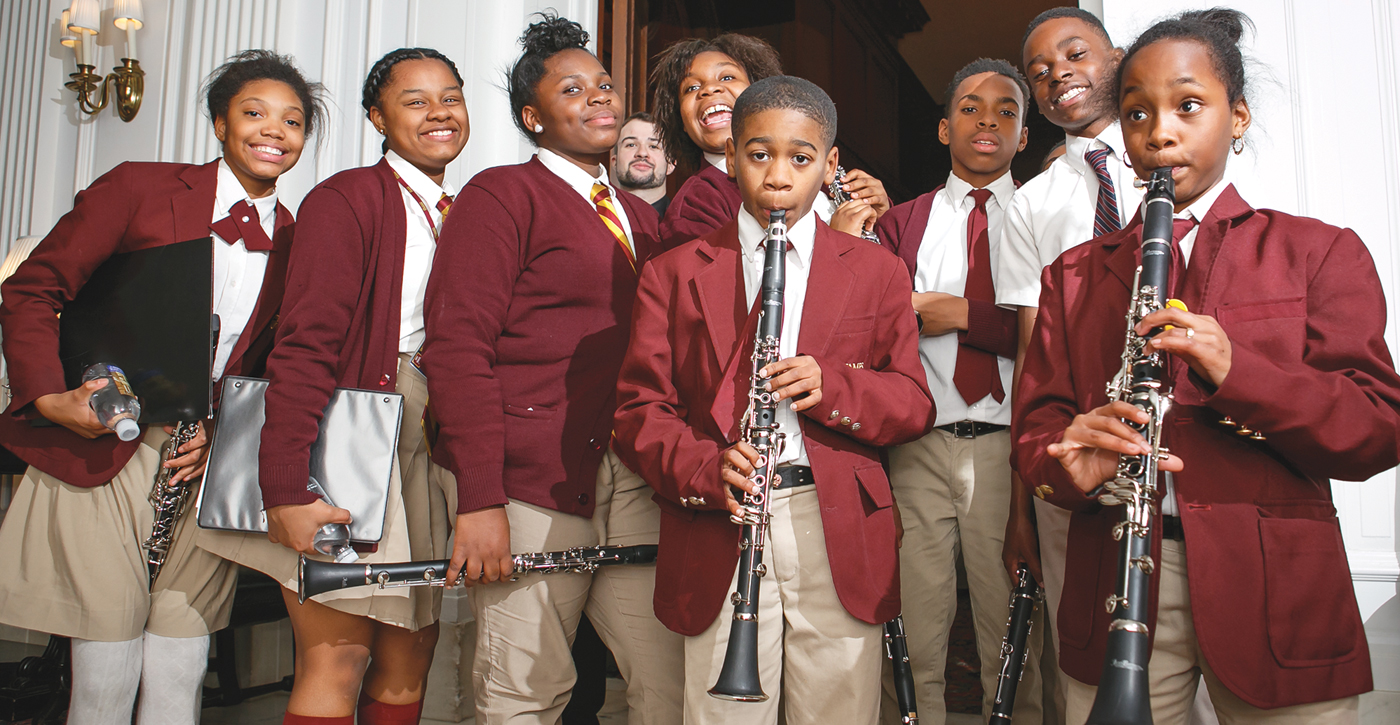Philadelphia Yearly Meeting’s Residential Meeting on July 18, 2001, explored the meaning of "under the care of," a phrase familiar to Quakers, which refers to the relationship of Friends meetings to institutions such as schools and retirement communities over which a meeting has oversight. In that context, I was asked to share the following account from my perspective as a member of Green Street Meeting and as a member of the Oversight Committee of Greene Street Friends School. (The variation in spelling is because the meeting, which was established in 1829 on its present site on School House Lan-e in the Germantown section of Philadelphia, took its name from an older meeting that once stood at 4th and Green Street in center city. Though on the same block as the meetinghouse, the school faces onto Greene Street, this one spelled with an extra e.)
Mine is an example of a small meeting that has a small school attached to it. The story has a happy ending, but it represents the disconnection that, I have learned from the comments of Friends, often occurs between meetings and their schools, a problem that becomes apparent when there is a crisis or a big decision to be made.
Our school has about 220 children enrolled from pre-K through 8th grade. The school has gone through a number of changes in its 150 years of operation. It started out as a girls’ school and then gradually evolved into a coed school with a middle school. It is seen as a community school, serving families that live in Germantown and Mt. Airy, and the school population reflects the diverse population of these communities. The diversity is apparent in the mix of races, family structures, ethnic backgrounds, economic levels, and academic strengths. Greene Street Friends School enjoys the support of its loyal parents and alumni that prize its family feeling and the warm, personal attention given to the students by the faculty. The school recently received good press in the Philadelphia Inquirer.
So, what erupted as a problem? What was the crisis that revealed the fault lines between the school community and the meeting community, causing stress among all parties?
The problem was a need for more space for the middle schoolers. Lack of facilities was causing attrition in the 7th and 8th grades. A solution was sought through the possible acquisition of nearby land in the vicinity of the meetinghouse and the school that might come up for sale. Enterprising parents, including an architect, a lawyer, and an accountant, were part of a team that explored acquisition and proposed the purchase to the meeting, which would ultimately own the new property, as it did the school.
To the team’s surprise, and later, its frustration, after many presentations in which the team members felt they were repeating themselves, the meeting was not coming to consensus and a few voices could be heard among meeting members of adamant opposition. As the months rolled by, the rumblings increased. Some members voiced a desire to tear up the asphalt and return to "a green and country towne." Others had dark premonitions of a cinderblock clone of a drugstore chain rising up to oppress our view, if the opportunity were let pass. Many of us who depend on the closeness of our meeting, felt deeply disturbed at how relationships grew tense and divisions threatened to drive us apart. The school community felt that a precious opportunity was on the point of slipping away and that lack of movement meant stagnation in the school and the lessening of support for staff and students.
The present head of school, Ed Marshall, on whose watch this crisis was occurring, tried to remain objective. In his efforts to do so, he perceived that, though occupying close physical space, the meeting and the school occupy different time spaces and the two constituencies have different purposes. Ed referred to this as a different "here and nowness," that is, each group experiences a different reality in its use of the shared space. What is here and now for meeting members as they attend meeting for two to three hours on a First Day is a retreat in the best sense of the word, a stepping back from busy daily life to seek renewal and refreshment in a close spiritual community. In contrast, the school community comes to the place of the school and meetinghouse on Mondays through Fridays to step up to daily life and do an involved and exacting job of educating children. The here and nowness of each group is vastly different despite overlapping space and values. That disjunction alone fosters a feeling of separation and, if left without intervention, this separation can quietly grow into a considerable gulf. Or, if a conflict emerges in which feelings are involved, the gulf fosters the addition of negative spins to mere statements of fact regarding our differences. This occurred for us.
Because of its unique history, the meeting had misgivings about holding real estate. It had spent long years disencumbering itself from properties and from inherited roles for former preparative meetings that had drained away countless hours and resources from its central purpose of spiritual renewal. Members felt weary from carrying burdens from the past. They complained that the school would commit them to a huge investment of time, resources and cumber, and then the parents would leave the school when their children graduated, the staff would rotate, and the small meeting would be left with an albatross. They suspected the school and parents of seeking to change the character of the school from a small, caring school with affordable tuition to being among the "academic elite."
On the other side, the school community felt that the meeting didn’t care about all the good work they had done and were doing. Meeting members were like absentee landlords; their obligation to come to a sense of the meeting seemed like an elaborate dodge obstructing the growth and life of the school.
Interestingly, there was a symmetry to each group’s complaints: they didn’t listen; they didn’t care.
Alarmed by the growing rumors and hardening of views, an ad hoc committee of meeting members formed and offered to conduct a "visioning meeting" in which representatives of each constituency would come together. By then, the apparent stalemate had lasted over a year. The plan was to call a meeting in the school cafeteria on a school night, to which meeting members, administration, faculty, and parents would be invited. In preparation, the meeting engaged a mediator skilled in helping groups sort out their tangles. She met with two of us to ask many questions about the situation. She proposed a structure for conducting the meeting. The date was set and invitations were sent out.
Then, during our meeting for business preceding the scheduled visioning meeting, our clerk observed that all conditions were met and that we had at last arrived at a sense of the meeting which cleared the way for acquiring the property. No doubt this was made possible, over those months of deliberation, by our frequent practice whenever this item for business recurred, of stopping to wait upon the Spirit. After a tense discussion, it was surprising how we moved closer together following a period of silence. Still, in that meeting for business, we were amazed to realize that quietly, without drama, meeting members had settled into agreement.
On May 3, 1999, the visioning meeting went forward with a packed house; all invited from each constituency showed up. There was an air of expectancy, but also one of lightness, for a major factor of discord had suddenly been removed. All recognized that the visioning meeting was necessary for healing and reconciliation. That night, we had stepped out of our different here and nownesses to be in the same room, to engage with each other, to test this unfamiliar coming together, to meet face to face and hear the words of the people whom we had each regarded as "the other."
The visioning meeting’s structure was simple but brilliant, thanks to the skilled guidance of our facilitator. After a brief introduction, each person was asked to write out answers to three questions. The responses were to remain anonymous, though we were to indicate whether we were parents, faculty/staff, or meeting members. After the writing and the questionnaires were collected, a panel that mixed the constituencies was appointed to read aloud the responses for each question to the group.
The questions were: first, "What are three things that I value most about Greene Street Friends School and would not want to see lost?"
The second: "When I think of the next five years in the life of the school, my biggest hope is . . . ; My biggest fear is. . . ."
The third: "I think that the three things most needed to strengthen the school/meeting partnership and have each party truly work together with the other for the good of Greene Street Friends School are the following: . . . ."
What was demonstrated that night from reading aloud the responses, and later from carefully tallying them, was the overwhelming evidence of what we shared. Across constituencies was a remarkable agreement on what we all valued.
The most commonly mentioned positive attribute for all was the diversity of the school (ethnic, economic, learning style, family structure, age range). A near second was the closeness of the community. Parents mentioned "Quaker values" more often than meeting members. Also highly prized was the small size of the school and the classes, which help create an environment in which each child is valued.
Our hopes were that the facilities and the excellence of the educational program would expand without the loss of what we most value.
Our fears were that the character of the school would change and move it away from its valuing each individual, its caring family atmosphere, its diversity, and its being an anchor in an urban neighborhood.
What was seen as most needed for strengthening the school community was frequent communication and collaboration. This recommendation has been taken up as a specific responsibility of the Oversight Committee, though all constituencies contribute. We have held joint service days such as Martin Luther King Day, begun by a parent and which, each year, expands. We have frequent reports to the meeting from the Oversight Committee. Members of the Oversight Committee sit in on faculty meetings from time to time to work through changes as they come up. Meeting members have sponsored Quakerism 101 classes in which school parents have joined. A meeting member writes a regular article called "Quaker Corner" on aspects of Quakerism that appears in the school’s newsletter for parents, the Lunchbox Express.
Renewed commitment and an enormous amount of energy were released for the good of all in the resolution of our conflict. It resulted in a new commitment from all constituencies to work together for the good of our shared values, our community, and the children under our care. We see the necessity of regularly stepping across the divides of our realities given the simple fact of our separate everyday experiences. We recognize that misunderstanding and conflict are inevitable and potentially productive when dealt with thoughtfully. We have seen the value of building into our ways of working frequent, systematic processes for low-risk and productive communication. The long period required for the coming to a sense of the meeting had a valuable result. From opposite stances we moved to a fusion of our views. I know personally that my original view changed, to be tempered by and to actually incorporate the views of others.
We might say that the meaning of the phrase "under the care of" has taken on lateral and reciprocal dimensions.




